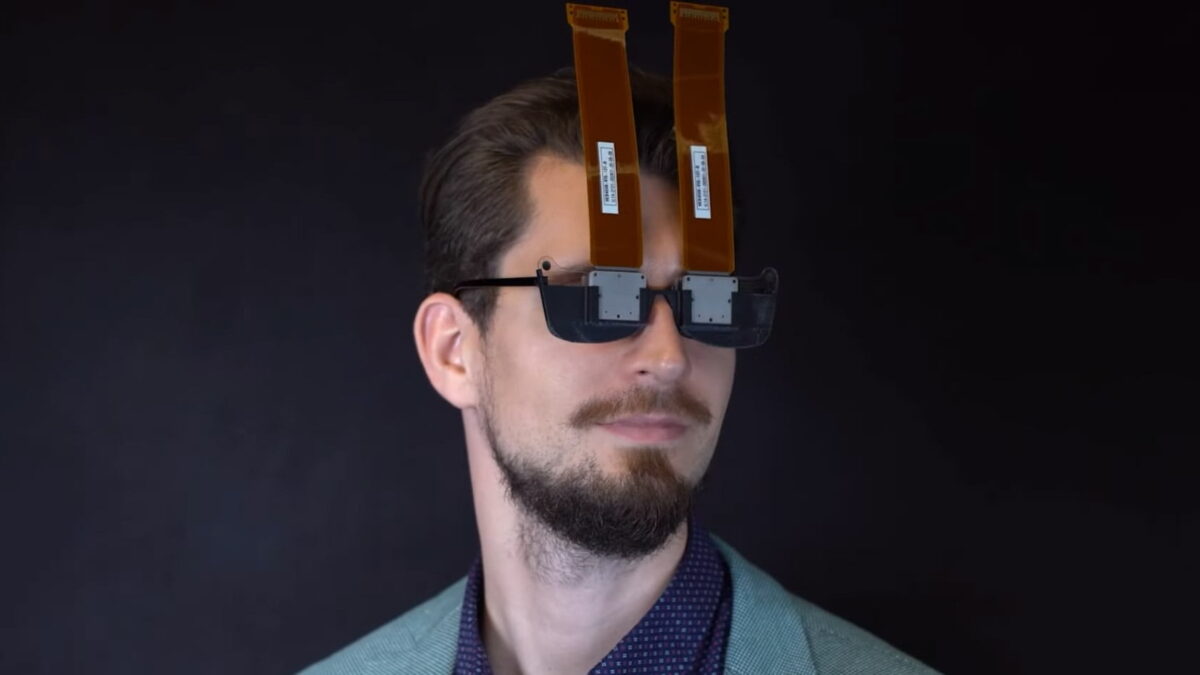Nvidia researches displays for very slim VR headsets

Nvidia and Stanford University present their research on very thin VR headsets. A prototype is 0.01 inches (0.25 mm) thin.
How can we fit today's clunky virtual reality headsets into the slim form factor of more regular glasses? That's the question many XR engineers around the world are asking. Nvidia and Stanford University may be one small step closer to that vision. Ahead of the 2022 Siggraph conference, they recently unveiled prototypes with an extremely compact form factor.
The thinnest prototype with a holographic display unit is only 0.01 inches (0.25 mm) thick. However, it still lacks other electronic components that are needed for a full-fledged VR headset.
Holographic display could relax the eyes thanks to multiple focus planes
In addition to flat images, a spatial holographic display with different focal planes is also possible. This could provide for less strained eyes eventually, as the vergence-accommodation conflict is thus sidestepped. The effect occurs when the brain wants to judge the distance of a more distant 3D object (vergence), but focuses on a display directly in front of the eye (accommodation). This irritates the eye muscles.
Unlike conventional VR glasses, the relatively large distance between lens and screen is omitted here. Instead, two lenses are integrated directly into the narrow display system. The image is generated between them with the help of a waveguide and a so-called spatial light modulator.
However, the first wearable prototype still has numerous disadvantages. These include a very small field of view of only 22.8 degrees (by comparison, the Quest 2 has around 95 degrees) or the tiny eyebox, i.e. the visible area of the rendered image, which is only about 0.09 inches (2.3 mm).
The larger this area is, the more compatible the VR headset is with different heads, form factors and still provides a good image even if the glasses slip. Meanwhile, the size of the spatial light modulator directly affects the field of view.
Some of these problems could be minimized as soon as better optimized components are available, the authors say. To achieve a field of view of about 120 degrees per eye, it makes sense to halve the focal length. One way to achieve this is to stack two of the new "geometric phase" (GP) lenses in the display system. At least one of these new GP lenses is included in the current prototypes.
The eyebox, in turn, could be enlarged to up to (still narrow) 0.31 inches (ca. 8 mm) with additional eye-tracking. The eye-tracking system could then change the angle of incidence of the light into the eye.
Nvidia's ultra-thin VR headset still needs a lot of fine-tuning
The report goes into detail about the currently essential fine-tuning of various parameters and components. To further improve the image quality, the authors also experiment with alternative algorithms for rendering.
The paper's authors hope their design and experimental prototypes will spur further research into thin VR headsets suitable for everyday use.
Meta already showed an extremely slim VR headset in sunglasses format in 2020. But this prototype was still a bit thicker at nine millimeters and did not have a holographic display unit, so it did not eliminate the "vergence-accommodation conflict" and had some other unresolved issues - but it had a much larger field of view. Meta is also conducting specific research on multifocal VR headsets, for example with the Varifocal prototype Half-Dome 3.
Note: Links to online stores in articles can be so-called affiliate links. If you buy through this link, MIXED receives a commission from the provider. For you the price does not change.